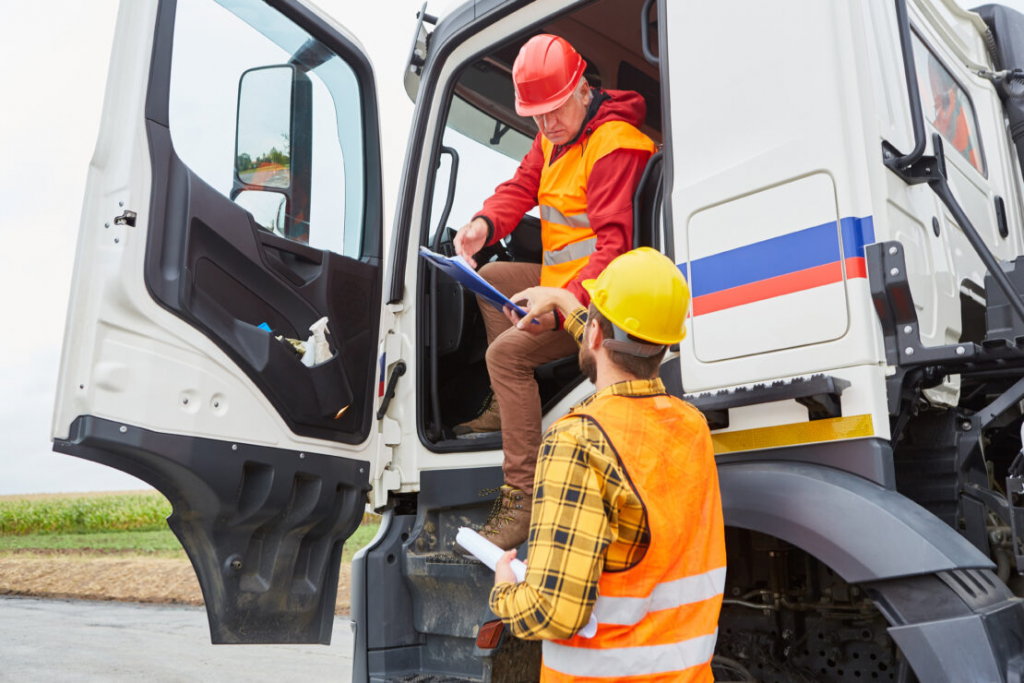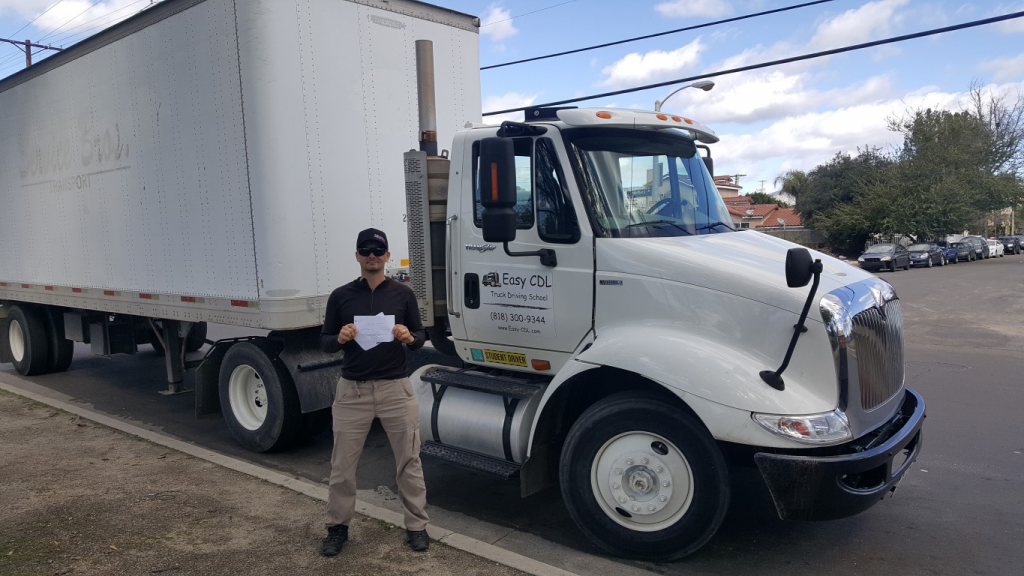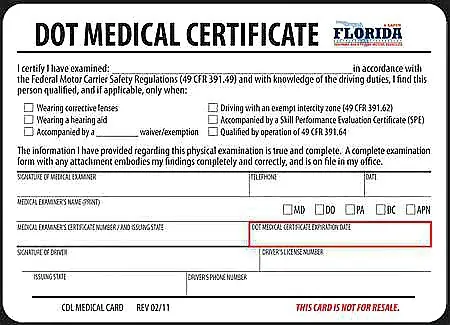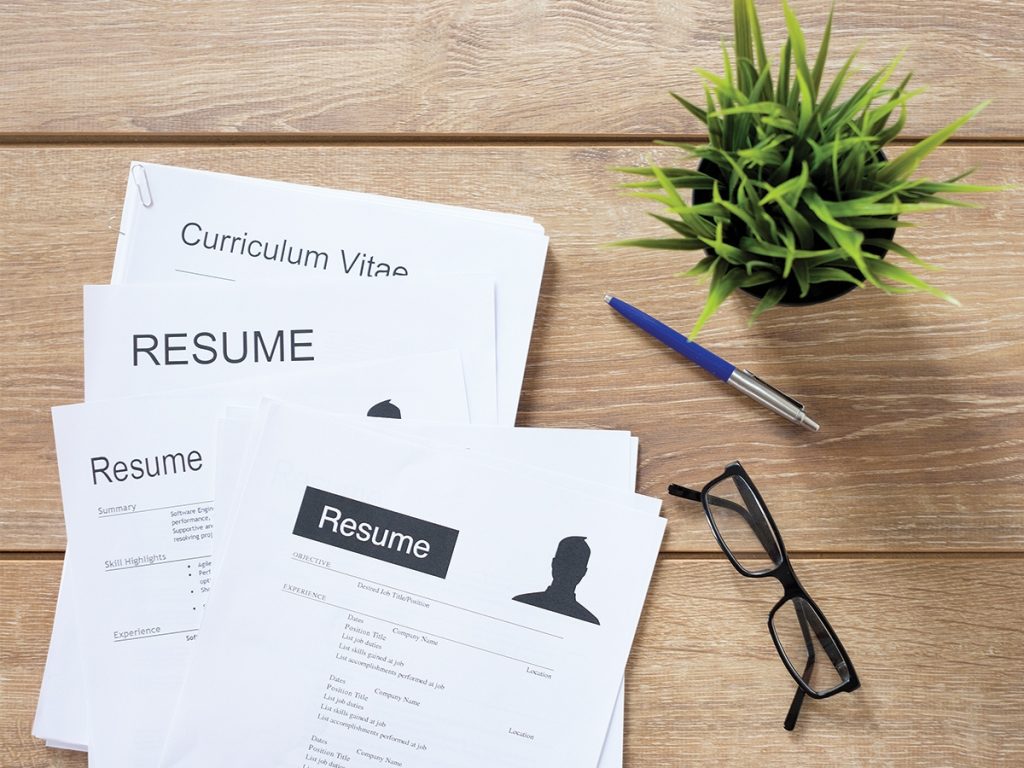Securing a Commercial Driver’s License is a huge step toward entering a very rewarding career path in the trucking or transportation industry. Of course, before hitting the open road as any professional driver, one must undergo a very important hurdle: the CDL road test. For that matter, this test will confirm your competency and knowledge of being able to handle large vehicles in conditions faced in the real world. Nervous? Don’t be! Here’s a step-by-step guide to get you through everything you need to know: an exhaustive checklist of what to expect and some practical tips to help you pass with flying colors. It’s time to get you ready for the road!
What is the CDL road test?
The CDL road test is the last and most important part of getting your Commercial Driver’s License. It is a test designed to determine whether you are able to safely and competently drive a commercial motor vehicle. You are going to be tested on how practically you can drive a vehicle in natural conditions from mere basic control of the vehicle to more advanced turns, such as backing and turning in traffic.

The on-road test for a CDL, given by a qualified examiner, will normally require you to drive on public roads and demonstrate your knowledge of traffic laws, safe driving practices, and how to operate your vehicle. You will be tested based on your execution of such maneuvers as starting, stopping, merging, and controlling the proper speed of the vehicle. Although the rules differ somewhat for each state, the essence is always the same: to ensure that you are ready for this great responsibility of driving a commercial vehicle safely on the road.
What does the CDL road test consist of?
The CDL road test checklist includes essential tasks you must complete to prove that you can safely operate a commercial vehicle. The breakdown of these keys are as follows:
Turns
- Slow down well in advance of the turn, signaling with plenty of time.
- Turns to the right: Stay as close to the curb as possible and swing wide to avoid clipping the curb or other obstacles.
- Turn to the left: Starting from as far to the left as possible cross entirely over into the road and clear oncoming traffic.
- Control your steering: Smooth steaming results in a smooth ride with no jerks. Hold the steering wheel with both hands for added stability.
- Speed management: Constant speed while turning, power out only when clearing the turn.
Intersections
- Complete stops: Complete stops at stop signs or red lights, for proper view and right of way.
- Scan all directions: Look toward all directions: pedestrians, cyclists, and other cars.
- Right of way: Give the right of way to other traffic and pedestrians according to the rules, especially at busy junctions.
- Smooth acceleration: When safe to do so, pass through the intersection at a slow and constant rate of speed, and then accelerate after having cleared it.
Urban business
- Watch for pedestrians and cyclists: There are more pedestrians and cyclists on or near the roadways in urban areas; therefore, be watchful.
- Low speeds: Travel at slower, controlled speeds in urban areas while maintaining an awareness of crosswalk locations and stop lights.
- Tight turns and narrow streets: Anticipate tight turns, staying in your lane on narrow streets to avoid curbing or sideswiping parked cars.
- Frequency of stops: Anticipate stops at crosswalks, and at traffic lights; be prepared to stop for any pedestrian or vehicle that might suddenly move.
Lane changes
- Signal well in advance: Signal well in advance of changing lanes so other drivers are aware of your intent.
- Check your mirrors and blind spots: Check regularly that your mirrors and blind spots are clear. Do not make any sudden moves.
- Maintain speed: Match your speed to the traffic that you will be moving into, or to the speed of the lane you’re merging into. Avoid rapid acceleration or deceleration when changing lanes.
- Manage space: Ensure there is space in the lane you are moving into, leaving space between your vehicle and others when you merge.
Expressway/highway
- Smooth merging: When merging, gain speed to equal the highway traffic. Well-advanced signaling and checking of mirrors and blind spots
- Lane positioning: Keep your vehicle in the middle of your lane and keep a safe following distance with the vehicle in front.
- Preparation for exits: Plan well ahead for exits; if possible, go right-side lane prior to exit. Signal well in advance from other drivers in case of exit.
- Following the speed limitation: Obey speed limits as marked but adjust speed downward according to weather or traffic conditions.
Stop/start
- Controlled stops: The vehicle should be brought to a complete and gradual stop by braking smoothly, never to be done more abruptly than necessary to avert loss of control and/or shifting of cargo.
- Restarting safely: When stopped, check your mirrors and traffic around and then start moving forward by smoothly accelerating.
- Parking brake: If the vehicle is stopped on an upgrade, engage the parking brake until you are ready to start up again; do so if parked on a grade for a short time
- Alerting signals: Hazard lights should be turned on in case one stops in a location other than a standard stop so other drivers are warned
Curve
- Approach at reduced speed: Large vehicles can tip if curves are taken too fast. Adjust your speed before you enter the curve.
- Lane position: Stay centered and do not drift into other lanes. Keep both hands on the wheel to control the vehicle.
- Steady speed: Keep your speed constant in the curve since braking could make your vehicle pull toward the inside of the curve, or even turn over. You may accelerate a little as you leave the curve.
- Visibility: If it is hard to see through a curve use your high beams. Pay particular attention to posted signs showing sharpness and speed limits for the curve.
Railroad crossing
- Look and listen: Always look out for an oncoming train; also, be alert for lights or signals.
- Stop if necessary if no signals are seen at the crossing, or if a train is in view, stop completely; proceed after the way is clear.
- Do not change gears: This advice is to avoid your vehicle stalling on the track because of changing gears on crossing the tracks.
- Clear tracks quickly: Make sure you can completely clear the crossing without stopping before you start across.
Bridge/Overpass/Sign
- Check clearance: Know the height of your vehicle and the height of bridges, overpasses and signs you will pass underneath.
- Reduced speed: Some bridges and overpasses have unusual road characteristics or limited sight distance; drive more slowly on them.
- Weather awareness: Bridges and overpasses can become slippery when wet or icy even if the rest of the highway is dry; slow down when it rains or snows.
- Weight limits: Make sure your vehicle will not exceed any posted weight restriction before crossing.
General driving behaviors
Clutch usage
- Smooth engagement: Press the clutch and release it smoothly. Avoid jerking or stalling, especially on gear shifts.
- Avoid riding the clutch: Rest your foot from the clutch pedal when not shifting to avoid unnecessary wear.
- Double-clutching: For manual transmissions, double-clutch in order to match the gear speed and therefore not grind the gears.
Gear usage
- Gear selection: Always engage the proper gear depending on speed and road conditions. Avoid using high gear over low speeds.
- Smooth shifting: Proceed to shift your gears smoothly so as to keep control without jerking. It is advisable not to skip gears where possible.
- Downshifting: Engage in downshifting on declines to maintain your speed under control rather than only relying on brakes. This will prevent too much wear on the brake and will always help the driver to be in better control.
Brake usage
- Controlled braking: Apply gradually without causing any sudden stops unless such action may be required for safety.
- Avoid sudden braking: Engine braking or downshift before going downgrade to avoid overheating or brake fade.
- Following distance properly: The space between you and the vehicle in front should allow you to brake smoothly without sudden stops, so that you’ll have time to react to traffic.
Lane usage
- Stay centered in lane: Your vehicle should be in the center of your lane, without drifting into other lanes or hugging the line.
- Signal lane changes: Always signal when changing lanes and then check your mirrors and blind spots.
- Correct lane: Drive in the right lane on all multi-lane roads. Pass to the left of another vehicle only when it is safe to do so.
Steering
- Hands-on-wheel: Always keep both hands on the wheel to ensure full control-each hand at the 9 and 3 o’clock position.
- Gradual movement: Make a gradual turn of the wheel to avoid quick jerks or tugs on the wheel, especially while negotiating a turn or changing lanes.
- Hand-over-hand: Employ the hand-over-hand technique in making tight turns with accuracy and still maintain control of the vehicle.
- Keep the vehicle in its lane and avoid drifting, especially during curves or heavy congestion.
Regular traffic checks
- Use mirrors frequently: Regularly observe side and rearview mirrors to monitor other surrounding traffic and blind spots.
- View blind spots: Check over your shoulder momentary during any time when you will need to; for instance, before lane changes or merges.
- Scan ahead: Continue to scan the road well ahead, searching for potential hazards, stopped traffic, or changes in road conditions.
- Side checks at Intersections: At intersections, look both ways to expect cross traffic or pedestrians.
Use of turn signals
- Signal in advance: Use your turn signals well in advance of any turn or change in direction to give other drivers plenty of time to react.
- Cancel turn signal: Turn off your turn signal after you have completed your turn or lane change so that other drivers do not get confused by your actions.
- Signal all movements: Always signal your intentions to turn, merge, pull over, or change lanes, even when you think traffic is light.
- Double-checking signals timing: Check for correct timing; well in advance of a movement, or well after, is misleading to other traffic.

How to take the CDL road test?
To help you take the CDL road test smoothly, we have guided every step, from scheduling to all the way to acing the real word. The following is what you need to know so as to approach your CDL road test with confidence:
Make a schedule
Here is what you will need to know in general when schedule your CDL road test:
- Waiting period for minors: Most states have a waiting period for young drivers under the age of 18, in which they will have to wait a minimum period of time, approximately 6 months after they obtain their learner’s permit and can schedule the test.
- Scheduling and availability: Testing appointments are usually available in locations near your ZIP code. The earliest road test dates may be from 3 to 5 weeks, but during high demand times, it can be as long as up to 10 weeks.
- Flexible test locations: Some states permit scheduling a road test at any location convenient for you within the state, not just within your home county of residence.
- Required documents: This typically would include a valid learner permit, proof of pre-licensing or driver education course completion, the ZIP code for the testing location of your choice, and credit or payment for the required test.
Conquer the road test
To make sure your road test in getting a CDL goes well, follow these guides:
- Check for cancellations or delays: Sometimes, tests are postponed or moved to another site because of weather conditions or traffic flow. Check the status of your test before leaving.
- Arrive early: Arrive 15 minutes before your appointment time. Being late may be cause for rescheduling.
- Be prepared for the weather: Not all locations have shelters so dress accordingly and prepare for the weather.
- Items not allowed: Law states that weapons including firearms are not allowed on the testing sites.
What to bring along on your test:
- Registered test vehicle: Take along a clean, registered vehicle in good condition for the test.
- Physical learner’s permit: Bring along physical photo learner’s permit. No digital IDs are allowed.
- Corrective lenses: If your permit says you need corrective lenses, then you should wear your glasses or contacts.
- Course completion certificate: You will need to bring the original certificate of completion. No copies for a pre-licensing course or driver education course, if you have taken one.
- Supervised driving certification: If you are under 18, you will need to bring your green supervised driving certification signed.
- Accompanying licensed driver: You will be required to bring a licensed driver with you to take the test; this licensed driver needs to be at least 21 years of age and bring a physical ID and one that is valid to operate the test vehicle-no other passengers are allowed in the vehicle.
Receive the result
Most of the time, your results will be in at evening on the same day as your test. Check with your state for their specific website or DMV portal to view your test results.
If you pass
- Interim license issued: If you pass, you will be issued an interim license that will allow you to drive until your actual CDL arrives by mail in a couple of weeks.
- Probation period: New drivers sometimes face a probationary period. Take note of any specific restrictions, as states also have unique laws for young drivers if you’re under 18 years old.
If you don’t pass
- Valid learner permit: Your learner permit is valid until such time as it expires and allows you to continue practicing until you take your next test.
- Scheduling a retest: You will be allowed to schedule your test again, often after a 7-day waiting period. Additional tries may require added fees if you have failed the first two road tests.
- Pay for a retest: You will need to have your permit ID and DMV client number available to you when paying any required fees online.

Tips to pass CDL road test
Preparation, practice, and a good understanding of what to expect are the pathways to successfully passing the CDL road test. Here are some detailed tips & strategies that will help you ace the test.

Well-prepared before the real test
- Be familiar with the test format: Knowing what the format entails in specific maneuvers that one is going to conduct, such as the pre-trip inspection, backing, and on-road driving.
- Check additional state requirements: Some of the requirements may vary in every state; hence, it would be wise to check your local DMV if there are other requirements that need attention or if the procedure is different.
- Prepare your mind: Before taking the test, take some time to visualize yourself successfully taking each part. Positive visualization really helps in cutting anxiety and will make you feel more confident.
Practice driving
- Pre-trip inspections: Practice consistently with a complete pre-trip inspection. It gets you into a good habit that will help in studying for the test and keeps the idea of vehicle safety fresh in your mind.
- Practice key maneuvers: Perfect backing, turning, and parking, and take your time while doing these maneuvers. Cones or markers set up will give you a mockup of real-life scenarios and allow you to work on your spatial awareness.
- Practice driving in all conditions: Gradually start driving in different conditions of traffic and weather. Be more confident and flexible; thus, you will know what to expect from your car in these situations.
Stay cool & dedicated
- Maintain concentration during the test: Be conscious and attentive to the task you are going to perform. Avoid distractions by taking deep breaths to keep yourself relaxed and focused.
- Safety first: Always check your mirrors, keep appropriate signals on when needed, and keep a distance in between. This will be impressive behavior on the part of the test-taker.
- Keep a positive attitude: Approach the test with confidence and positivity. If you happen to make one mistake, put it out of your mind and continue with the test to the best of your abilities.
FAQs
1. How many attempts to pass the driving test?
The number of attempts that a driver can retake the CDL road test after failure varies from state to state. Most states allow a total of 3 attempts to pass the road test. There could be a waiting period and probably a re-test fee.
2. What is the best time to take the driving test?
It’s recommended that you schedule your test early in the morning or in the middle of the week when the flow of traffic is smooth. This will reduce your stress levels and leave some room for comfort to showcase your skills.
3. What is the hardest thing on the road test?
Most people find that the back and park portion of the CDL road test is the most difficult of a large vehicle test. However, with any other skills, mastery will come with practice.
Final thoughts
The most important milestone that you have to go through to become a professional commercial driver is passing the road test for a CDL. With sufficient preparation, knowledge of what to expect, and practice of the driving maneuvers on a regular basis, you will be surely confident on the test day. Keep calm, be patient with yourself, and set your mind on learning from mistakes so that you will succeed. Good luck on your road test for a CDL!



